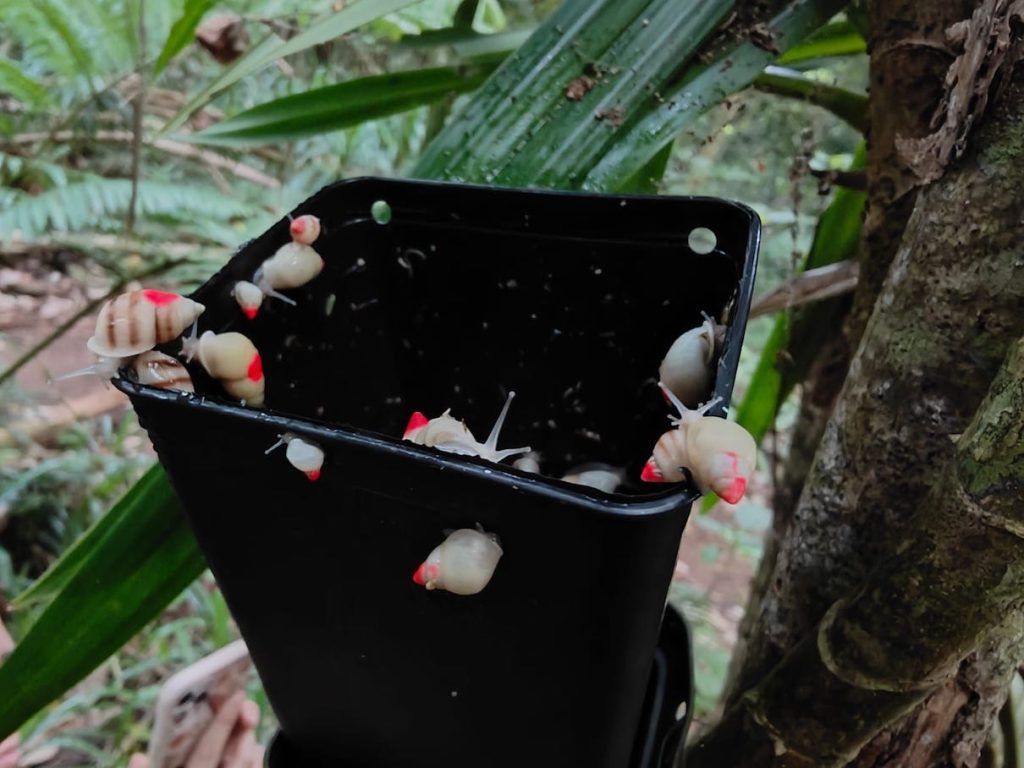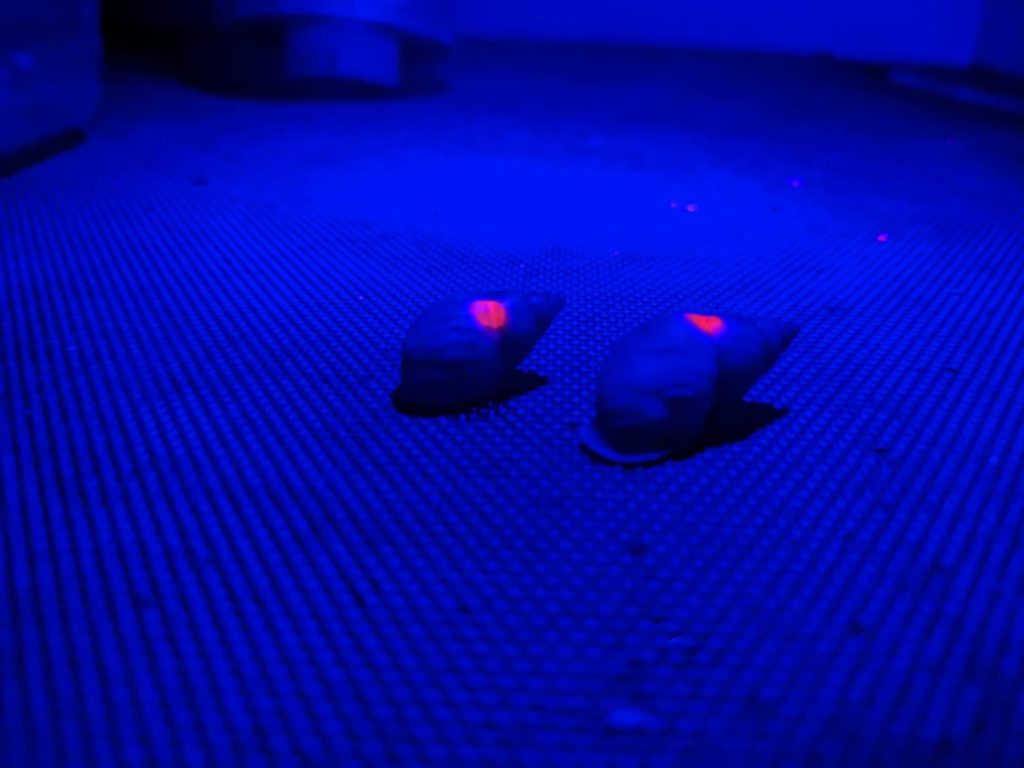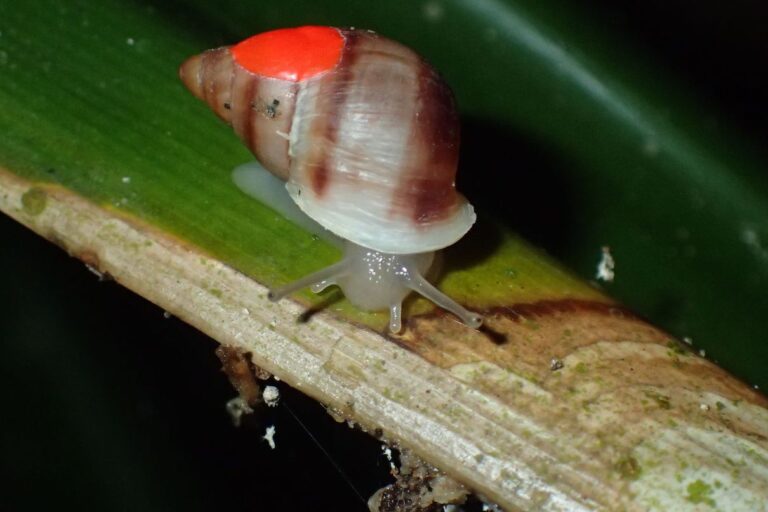Written by: Elizabeth Claire Alberts
The Polynesian tree snail, a tiny mollusk about the size of an aspirin pill, used to be found in abundance on Tahiti, the largest island in French Polynesia. But about 30 years ago, the little snail was eaten out of existence by two larger snails — the giant African land snail (Lissachatina fulica) and the rosy wolf snail (Euglandina rosea) — that humans introduced to the islands. In 1994, the Polynesian tree snail (Partula nodosa) was declared extinct in the wild. Other Partula snail species have also been marked as extinct in the wild or critically endangered.
However, some Partula snails lived on in captivity. In the 1990s, conservation experts from various zoos — including London and Whipsnade zoos (which are part of the Zoological Society of London, or ZSL), the Royal Zoological Society of Scotland, and Saint Louis Zoo in the United States — had rescued some of the last remaining individuals of several Partula species. And over the past decade, they’ve been slowly reintroducing them to the wild.
In April, zookeepers organized yet another reintroduction, this one involving the transport of 5,522 extinct-in-the-wild and critically endangered Partula snails to the French Polynesian islands of Moorea and Tahiti. According to ZSL, this was the largest-ever release of extinct-in-the-wild species.

“Despite their small size these snails are of great cultural, ecological and scientific importance — they’re the Darwin’s finches of the snail world, having been researched for more than a century due to their isolated habitat providing the perfect conditions to study evolution,” Paul Pearce-Kelly, ZSL’s curator of invertebrates, who helped coordinate the Partula conservation program, said in a statement.
“This collaborative conservation initiative is, without a doubt, helping to bring these species back from the brink of extinction and shows the conservation power of zoos to reverse biodiversity loss,” Pearce-Kelly added. “With nature across the world increasingly under threat, these little snails represent hope for the world’s wildlife.”
Partula snails play an important ecological role in French Polynesia by eating dead plant tissue and debris, which helps maintain the health of the forests. Conservation experts say they hope the snails’ return will help restore ecological balance to the islands.
Justin Gerlach, a mollusk specialist at the University of Cambridge who helped with the reintroduction effort, said that while the rosy wolf snail is still on the islands, it’s extremely rare and shouldn’t pose a threat to the reintroduced snails.

“It has declined as part of the normal invasive ‘boom and bust’ dynamics but also because another predator has arrived more recently,” Gerlach stated in an email. “The New Guinea flatworm (Platydemus manokwari) is a generalist predator of invertebrates (snails and arthropods) and seems to be suppressing the Euglandina populations. It is a problem in its own right but we think we can re-establish Partula back in the trees as the flatworms are mostly on the ground.”
Gerlach said it’s difficult to tell right now how well the reintroduced snails are doing, but that they appear to have dispersed well.
“In many species, newborn snails can be found, but within a few weeks they all disappear into the canopy, out of sight,” Gerlach said. “We marked these ones with UV reflective paint to make it easier to spot them, so we hope we will be able to see where they go for longer.”
This article originally appeared on Mongabay







